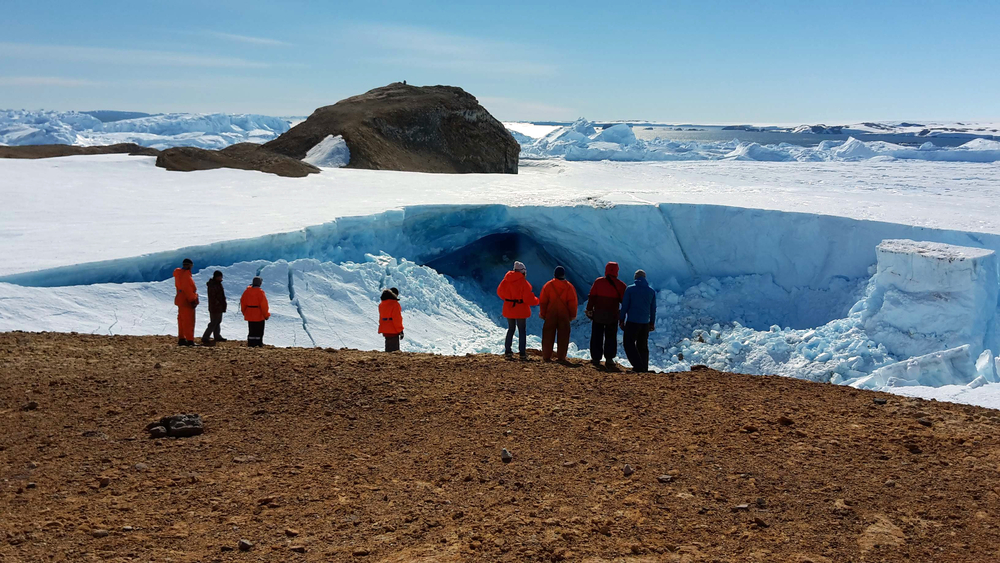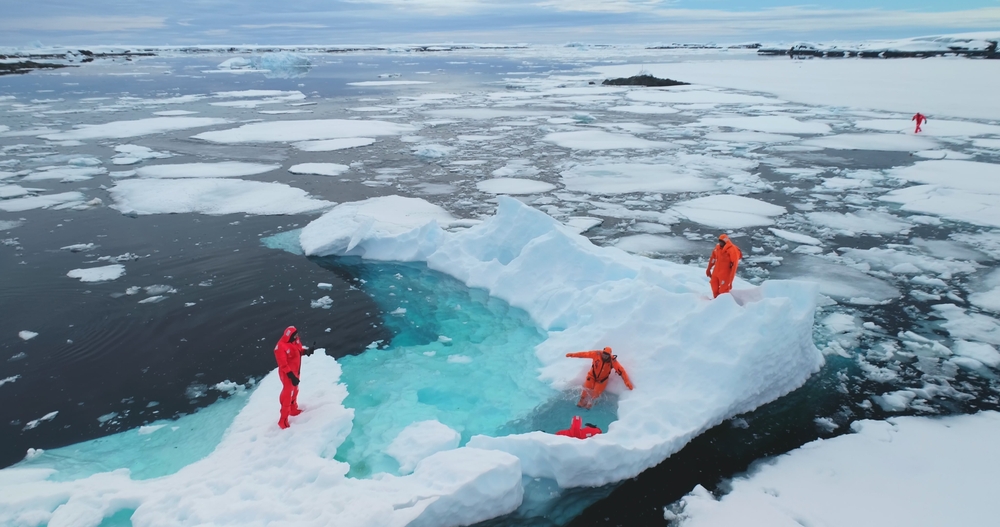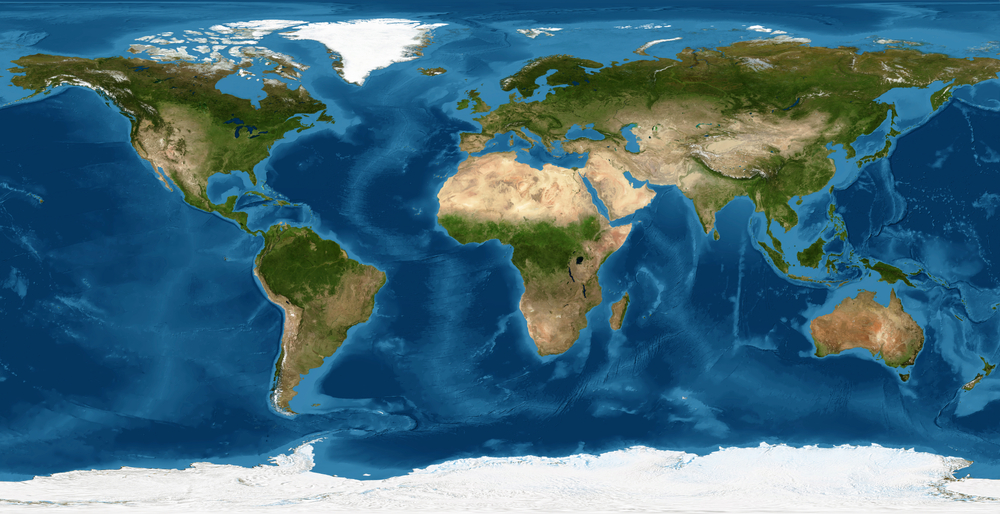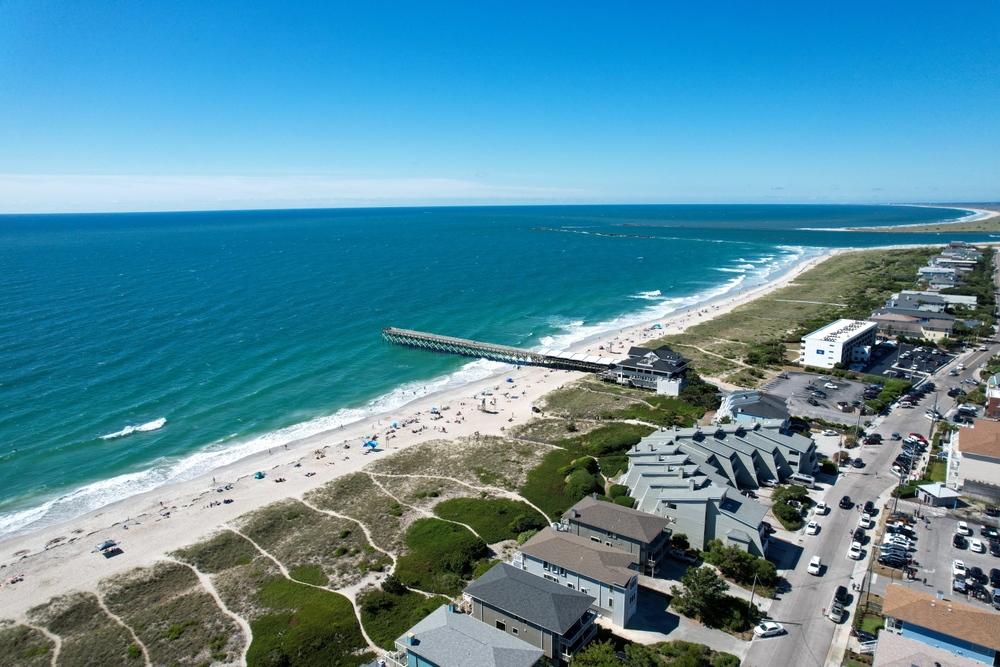Alaska Just Gained a New Island—and NASA Says It’s a Warning Sign

The earth is not as still as it looks on a map. Lines shift, landscapes rise and fall, and even mountains are not immune to transformation. Recently, NASA confirmed a startling change in Alaska: a brand-new island has emerged, a chunk of land once bound to a glacier now cut loose, standing alone in the waters of a growing lake. What might sound like a simple geographic curiosity is actually a story with planetary consequences, and perhaps a mirror for the way our own lives evolve.
The land in question is known as Prow Knob, once part of a larger glacial system. Now, after decades of melting ice and gradual separation, it exists as its own island. Scientists are not celebrating this change; instead, they warn it is a symptom of deeper issues — the acceleration of glacial retreat and the instability that follows. But beyond the science, there is poetry here: an isolated island born of loss, a reminder that even as the world fractures, new shapes and stories emerge.

From Ice to Island: The Science Behind the Shift
The transformation of Prow Knob into an island has been quietly unfolding for over forty years. In the early 1980s, satellite images captured the glacier still holding tight, its thick body pressing against the mountainside. By 1984, NASA recorded the first signs that meltwater was creating separation. Year after year, ice pulled back, water crept in, and the glacier’s grip weakened. This slow process reached its tipping point in 2025, when the ice finally vanished from the land bridge. What once felt like a solid, immovable part of the Alsek Glacier system had been cut loose, completely surrounded by water.
Scientists explain that the new island is not necessarily a stable landmark. The same forces that freed it — melting, erosion, and calving (the breaking off of chunks of ice or rock) — continue to act on it. The result is a place in flux, vulnerable to further change. It’s less a permanent addition to the map and more an ongoing experiment in how earth reshapes itself when ice disappears. NASA did not present the news as a simple discovery, but as a cautionary signpost: the environment we rely on is rewriting itself faster than many of us realize.
The story of Prow Knob is also a glimpse into the complexity of climate processes. Glacial melt doesn’t only create new lakes or islands; it shifts ecosystems, redirects rivers, and alters coastlines far beyond the site of the original change. The newly exposed land, barren at first, may eventually be colonized by plants, birds, and animals — but only if the surrounding conditions allow it. If the melt continues unchecked, the instability could worsen, creating collapse rather than renewal. This dual possibility — new beginnings and dangerous endings — is the paradox that defines our current era of climate transformation.

What It Means for Our Planet
The birth of this island is inseparable from the broader story of climate change. Around the world, glaciers are retreating at rates that scientists call unprecedented in human history. Every melt event contributes to rising sea levels, which threaten coastal communities from Bangladesh to Miami. Every retreat shifts ecosystems, forcing species to adapt or die. In Alaska, where glaciers are critical to both landscapes and livelihoods, this trend is particularly alarming. The island at Prow Knob is therefore not a local quirk but part of a global pattern.
When NASA issues warnings, they are not merely pointing out curiosities from space. They are drawing attention to cause and effect. For every glacier that melts, freshwater enters oceans, altering salinity and disrupting circulation patterns that regulate climate. For every block of ice that retreats, once-stable land can destabilize, leading to landslides, flooding, and other hazards. To scientists, Prow Knob is not a marvel but a marker — another piece of evidence in a chain of unfolding data that tells us our world is heating, changing, and demanding our attention.
It is worth noting that this process is not entirely new. Earth has always shifted; glaciers have advanced and retreated across millennia. The difference now lies in the speed. Human activity — the burning of fossil fuels, deforestation, industrial production — has accelerated warming to a pace that natural cycles cannot explain. What should have taken centuries is happening in decades. This is why the emergence of a new island cannot be seen as neutral geology; it is human history written in ice and water.

The Island as Metaphor: What Prow Knob Teaches Us
Nature’s shifts often carry lessons for our inner lives. Just as Prow Knob was once supported, held firm by the glacier, many of us depend on structures that feel immovable: routines, relationships, traditions, or systems of belief. But when those supports melt away — slowly, then suddenly — we find ourselves standing alone, no longer part of the old terrain. That moment of isolation can feel terrifying, but it also reveals who we really are without the weight of what once held us.
The island reminds us that growth often comes with vulnerability. Once separated, Prow Knob became more exposed to wind, water, and erosion. Similarly, when we detach from old identities or external validation, we may feel raw, unprotected. Yet this very exposure is what forces adaptation. Stripped of the glacier, the island must meet the elements directly; stripped of illusions, we must meet life more honestly. Vulnerability becomes the birthplace of resilience.
There’s also a lesson in time. The separation did not happen overnight; it unfolded over four decades of gradual change. Transformation in our lives, too, is rarely sudden. The “overnight success” is usually built on years of invisible shifts, small choices, repeated efforts. Recognizing this helps us stay patient with ourselves and others. Like glaciers, we may appear unmoved on the surface while, beneath, everything is changing. One day, a moment arrives — and we realize the island has emerged.
How This Connects to You
The story of Prow Knob is not only about Alaska — it is about you, me, and the landscapes of our own lives. Think of the glaciers in your world: the patterns and identities that have long defined you. Some of them may be melting. A job that once gave you security now feels unstable. A relationship that once gave you comfort now feels strained. A belief that once guided you now feels hollow. These shifts can be unsettling, but they may also be preparing you to stand on your own ground, to claim your island.
To navigate this transformation, you need awareness. Ask yourself: What is dissolving around me? Which supports are fading, and what new possibilities are being revealed? Too often, we cling to the ice long after it has begun to break away. By noticing the change instead of resisting it, we prepare ourselves for emergence. Awareness turns fear into readiness.
You also need inner anchoring. Outer structures may vanish, but your core values, your clarity of purpose, can remain steady. When you root yourself in principles that endure — kindness, integrity, creativity — you become less vulnerable to the instability around you. The island doesn’t float away because its foundation runs deep. The same is true for your life. No matter how much the surface changes, depth gives stability.
Finally, recognize the gift of solitude. Islands stand alone, but that isolation is not necessarily loneliness. It can be a place of discovery. In solitude, you hear your own voice more clearly. You learn the contours of your identity without constant interference. Just as Prow Knob’s shape is now visible in ways it never was before, your true form may only be revealed when you stand apart for a time. Instead of fearing the distance, embrace it as a season of definition.
A Balanced View: Warning and Wonder
It would be tempting to romanticize this story: a new island, a symbol of change, a metaphor for resilience. Yet we must be careful. The island’s existence is inseparable from the melting that threatens countless lives and ecosystems. What feels like creation is also destruction. The challenge is to hold both truths at once: to honor the metaphor without ignoring the cost.
Scientists emphasize that while islands like Prow Knob may inspire awe, the forces behind them — accelerated glacial melt and rising global temperatures — demand urgent attention. The island is a byproduct, not a blessing. If we mistake symptoms for gifts, we risk downplaying the urgency of addressing climate change. The balance lies in seeing beauty and warning together, allowing wonder to inspire responsibility rather than complacency.
At the same time, dismissing the symbolism would also miss an opportunity. Humans make sense of the world through stories, and natural events often provide the clearest metaphors for our journeys. The emergence of an island can be both a scientific data point and a reminder of resilience. It can motivate us to act — not only to heal our personal lives but to heal the planet itself. Holding both realities keeps us grounded, hopeful, and awake to the complexity of change.
Final Word
Prow Knob didn’t choose to become an island. Forces beyond its control shaped it, dissolved its supports, and left it standing alone. Yet here it is, a new presence in the waters of Alaska, carrying both warning and wonder.
You, too, will face seasons when the ground beneath you shifts, when what once held you no longer exists. In those moments, remember the island. Remember that vulnerability does not mean collapse; it means emergence. Remember that change, even when painful, reveals new forms, new identities, new strength.
The glaciers of your old self may be melting. Let them. Do not mourn only the loss — celebrate the uncovering. A new island is rising within you, waiting to be seen.
Loading...

